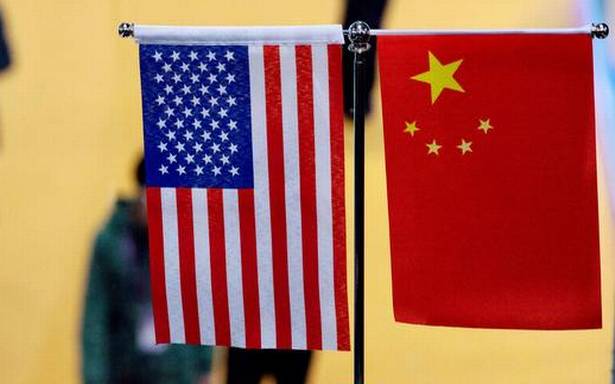While the Trump administration did succeed in expanding security cooperation, its economic aspirations, as well as building a broader coalition, remain, at best, works-in-progress.
The newly declassified 2018 Strategic Framework for the Indo-Pacific, made public by the Trump administration in its last week in office, underlines how prominently what it describes as “strategic competition between the U.S. and China” set Washington’s regional policy over the past four years, as well as President Donald Trump’s mixed record in effectively addressing that challenge.
Among the objectives outlined in the document are promoting American values throughout the region to “counterbalance” the values being promoted by China, deterring China from using force or threats against U.S. allies and partners, and building a credible economic response and advancing “U.S. global economic leadership” to counter China’s influence, as well as its major regional projects such as the Belt and Road Initiative.
China on Wednesday expectedly hit out at the document. Asked by State media specifically about its references to “protecting Taiwan and helping India contain China”, the Foreign Ministry spokesperson in Beijing, Zhao Lijian, dismissed the framework as “certain politicians on the U.S. side want[ing] to mark their legacy”. “It only proves the malign motives of the U.S side to contain China,” he said, adding that it “reeks of Cold War mentality” and “belongs to the dustbin of history.”
If the Trump administration certainly did achieve some of the outlined objectives, particularly in expanding security cooperation with India, Japan and Australia – or the “Quad” – its economic aspirations, as well as building a broader coalition to respond to China’s actions, remain, at best, works-in-progress.
Mr. Trump’s inconsistent approach to many of America’s own allies and partners, particularly on the trade front, has been one major obstacle. One of his first acts in office was to withdraw from the Trans-Pacific Partnership (TPP) agreement, which would have created the world’s biggest trading bloc, without China. The agreement was later concluded without the U.S.
The end of his term, meanwhile, saw the China-backed Regional Comprehensive Economic Partnership (RCEP) agreement come into force, which includes Japan, South Korea, Australia and New Zealand – countries that the U.S. had hoped to align with to offer a robust economic response to China.
The document notes China’s aims “to dissolve U.S. alliances and partnerships in the region” and “exploit vacuums and opportunities created by these diminished bonds”. Yet one of the biggest criticisms of Mr. Trump’s foreign policy has been his hot-and-cold approach to allies, for instance, demanding South Korea pay more to maintain a U.S. military presence there. His successor, Joe Biden, has declared shoring up alliances as one of his immediate priorities as well as a shift away from the messaging of “America First”.
Indeed, countries from India to Japan, wary of the unpredictability in Washington, had in 2018 and 2019 moved to try and shore up relations with China. India in June 2017 proposed holding an “informal summit”, which it went ahead with in 2018 and 2019 despite a border crisis in Doklam erupting only days after Prime Minister Modi’s proposal.
Ultimately, China’s own actions, on several fronts, did more than anything else to help further some of the goals in the U.S. strategic vision, particularly in building security partnerships. Rather than look to “dissolve” U.S. partnerships as the framework feared, Beijing’s actions, from the crisis sparked on the India border by its transgressions to tensions in the Taiwan Straits and the South China Sea, only helped deepen them.
Relations with India emerge as one major positive. The framework describes as one of its “desired end states” the U.S. becoming India’s “preferred partner on security issues” – a trend that the past four years has seen – as well as the two countries cooperating to counter Chinese influence in South and Southeast Asia – which, however, remains a work-in-progress.
This article is auto-generated by Algorithm Source: www.thehindu.com


